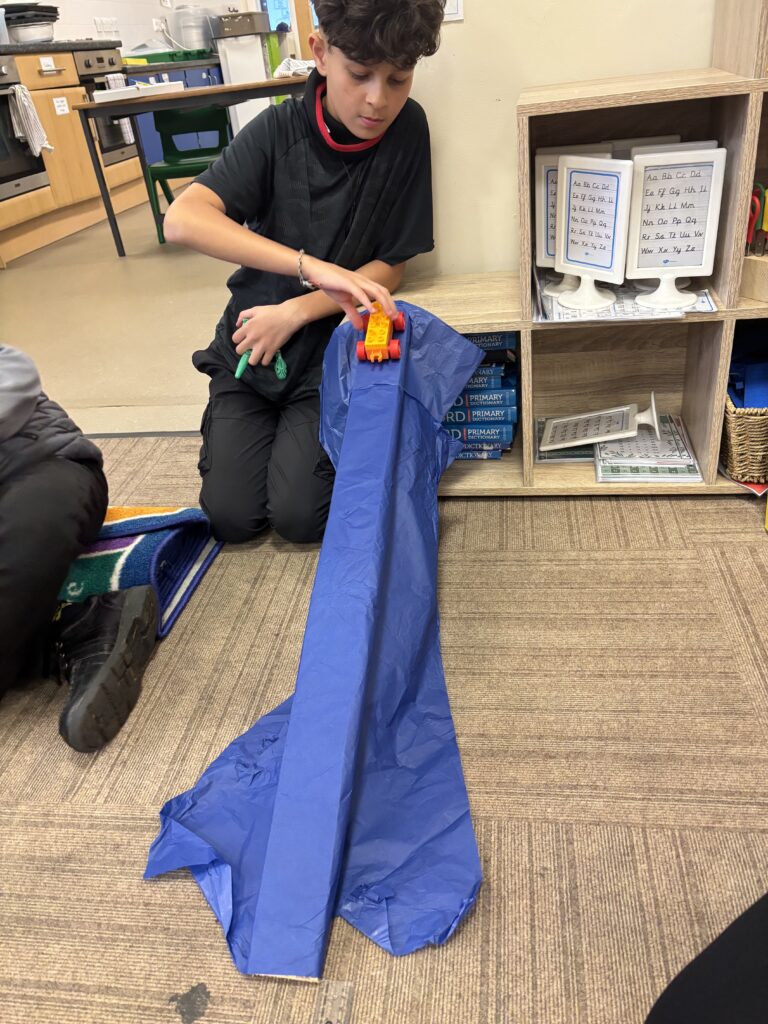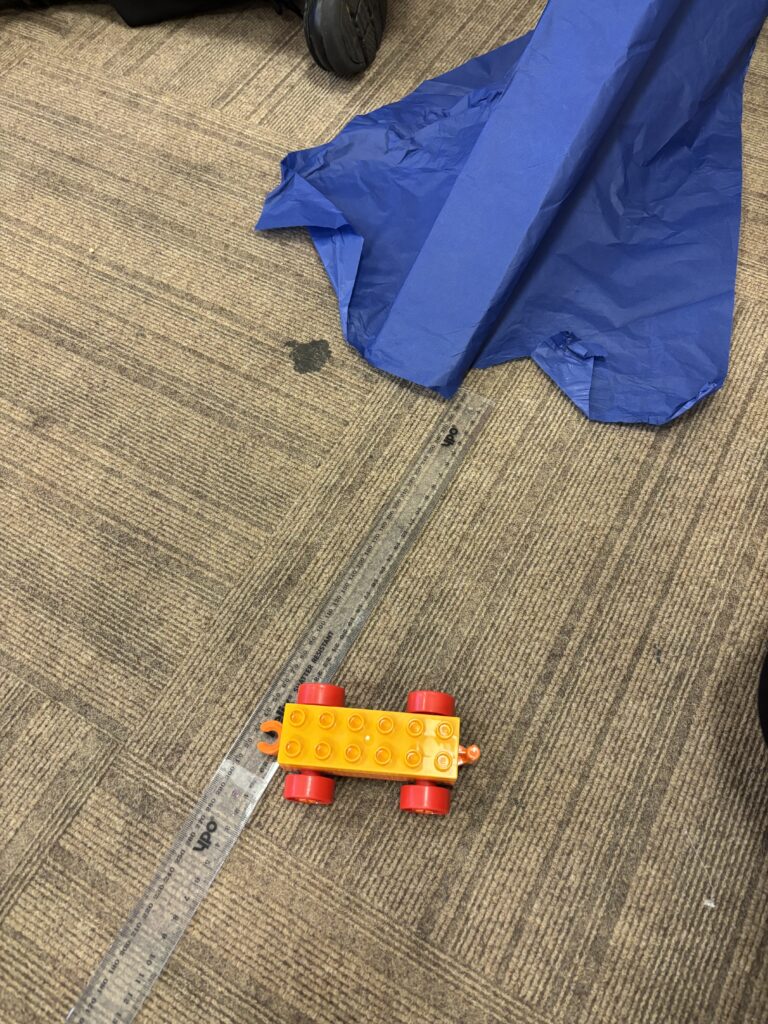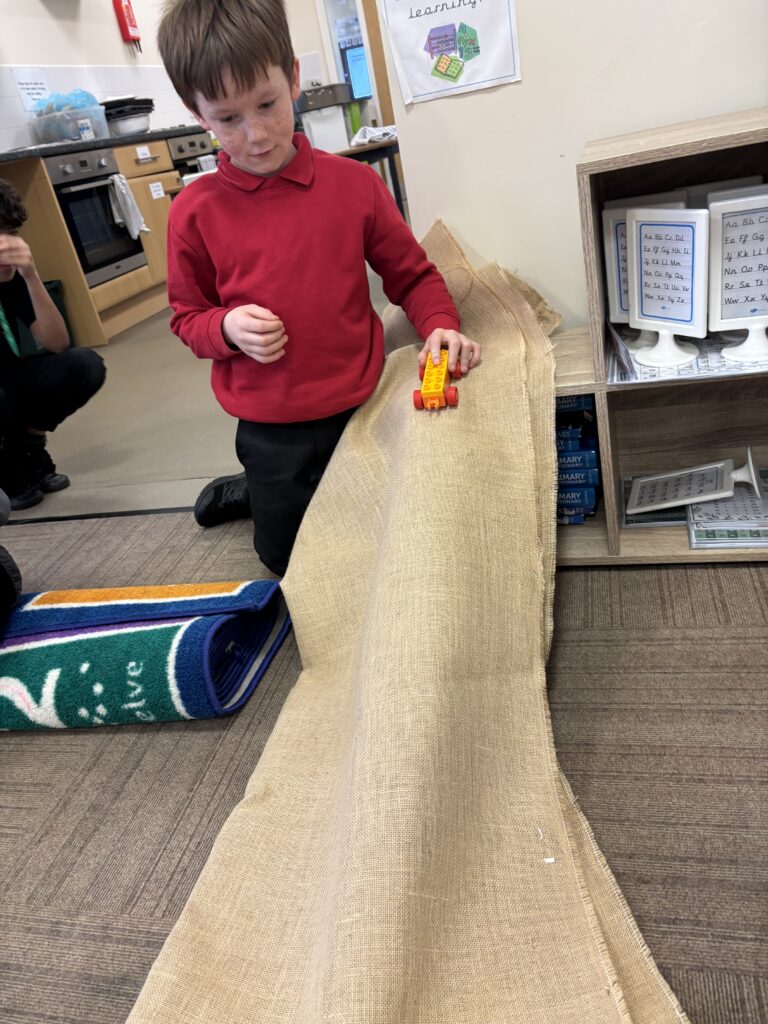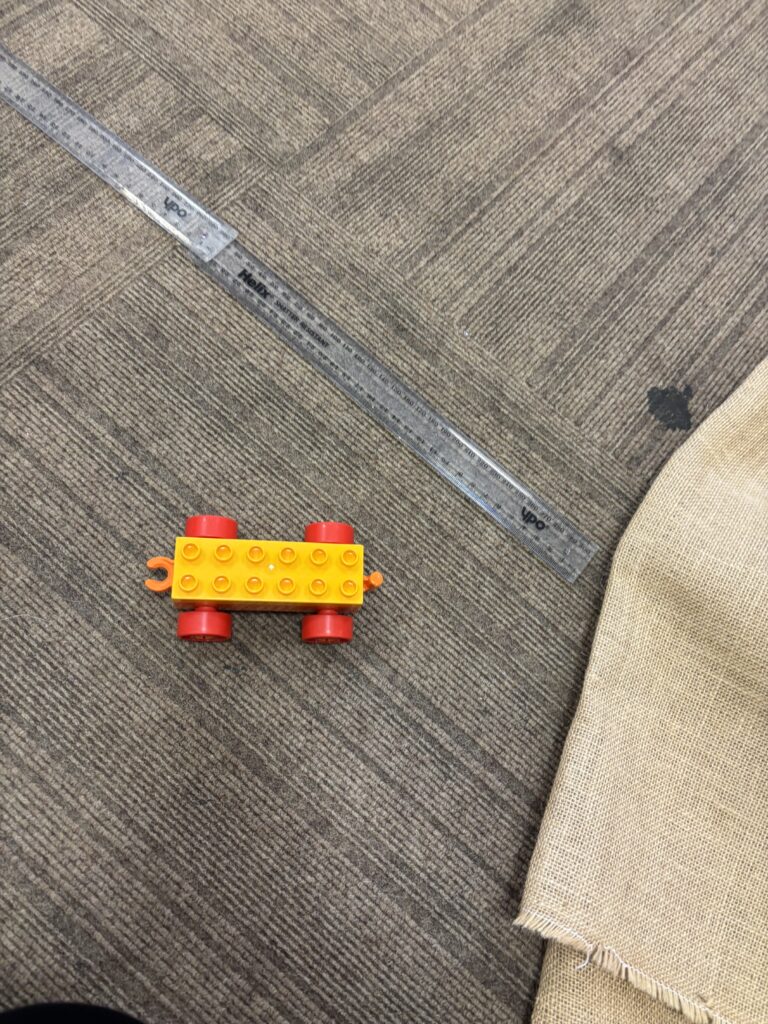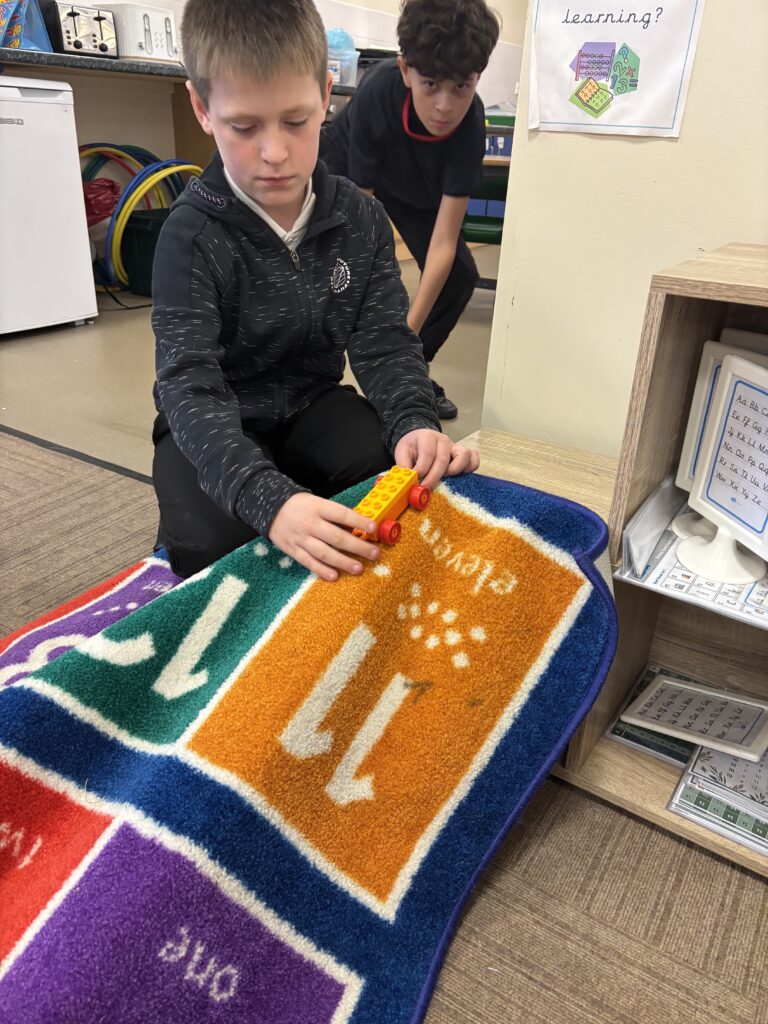To begin part one of our lesson on friction, we recapped some of our prior knowledge and looked at the scientific vocabulary that we needed for the lesson. We then looked at what friction is and watched a video that detailed what life would be like without friction. Once we’d had some more knowledge of friction, we began part two of our lesson which focused on an investigation in which we looked at the effects of friction on a toy car. Before we began our investigation, we discussed as a crew what we thought might happen and came up with a crew hypothesis. We then conducted the experiment to see if our hypothesis would be correct. We used a wooden ramp and 4 different materials to test how far the car would travel on the different surfaces. We were happy to conclude that our hypothesis was correct! We found out that a rougher surface would produce more friction, meaning the car would travel a shorter distance and that with a smoother surface it would travel further as there is less friction.

